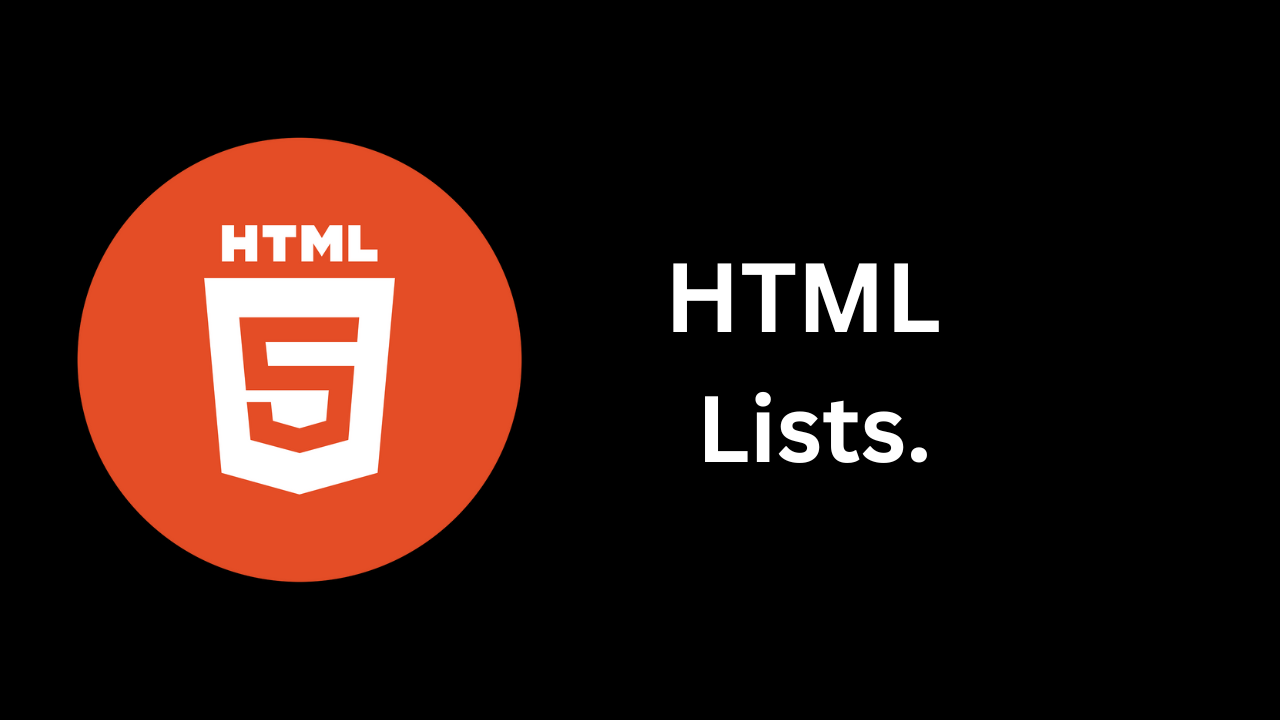HTML Lists
 Shivani Patel
Shivani Patel
HTML lists are a fundamental part of web design, allowing you to present content in an organized manner. Whether you're creating a menu, a set of features, or a simple to-do list, understanding how to use lists effectively can enhance your web pages’ readability and structure. In this blog post, we will explore the various types of HTML lists, their syntax, and best practices for using them.
Types of HTML Lists
There are three primary types of HTML lists:
Unordered Lists (
<ul>)Ordered Lists (
<ol>)Description Lists (
<dl>)
1. Unordered Lists (<ul>)
An unordered list is used when the order of the items is not important. Each item is marked with a bullet point. This is often used for navigation menus or lists of features.
Syntax
<ul>
<li>Item 1</li>
<li>Item 2</li>
<li>Item 3</li>
</ul>
Example
<ul>
<li>Apples</li>
<li>Bananas</li>
<li>Cherries</li>
</ul>
2. Ordered Lists (<ol>)
An ordered list is used when the order of items is important, such as steps in a process or ranking. Each item is typically numbered.
Syntax
<ol>
<li>First Item</li>
<li>Second Item</li>
<li>Third Item</li>
</ol>
Example
<ol>
<li>Preheat the oven to 350°F.</li>
<li>Mix flour and sugar in a bowl.</li>
<li>Bake for 20 minutes.</li>
</ol>
3. Description Lists (<dl>)
A description list is used for terms and their definitions. This is useful for glossaries or lists of terms with associated descriptions.
Syntax
<dl>
<dt>Term 1</dt>
<dd>Description for Term 1.</dd>
<dt>Term 2</dt>
<dd>Description for Term 2.</dd>
</dl>
Example
<dl>
<dt>HTML</dt>
<dd>The standard markup language for creating web pages.</dd>
<dt>CSS</dt>
<dd>A style sheet language used for describing the presentation of a document.</dd>
</dl>
Nesting Lists
You can also nest lists inside each other. This is useful for creating subcategories or more complex structures.
Example of Nested Lists
<ul>
<li>Fruits
<ul>
<li>Apples</li>
<li>Bananas</li>
</ul>
</li>
<li>Vegetables
<ul>
<li>Carrots</li>
<li>Broccoli</li>
</ul>
</li>
</ul>
Styling Lists with CSS
While HTML provides the structure, CSS allows you to style your lists for better presentation. Here are a few common styles:
Example CSS for Lists
<style>
ul {
list-style-type: square; /* Changes bullet points to squares */
padding-left: 20px; /* Adds padding */
}
ol {
list-style-type: upper-alpha; /* Uses letters (A, B, C...) instead of numbers */
padding-left: 20px; /* Adds padding */
}
dl {
margin: 10px 0; /* Adds margin */
}
dt {
font-weight: bold; /* Makes the term bold */
}
dd {
margin-left: 20px; /* Indents the description */
}
</style>
Best Practices for Using HTML Lists
Semantic Structure: Use the appropriate list type. For example, use
<ol>for steps in a process and<ul>for items where order doesn’t matter.Accessibility: Ensure that lists are easily readable by using clear language and maintaining consistent styling.
Limit Nesting: While nesting can enhance organization, excessive nesting can lead to confusion. Aim for clarity.
Keep It Concise: Lists should be brief. If items require lengthy explanations, consider using paragraphs instead.
Use CSS for Presentation: Use CSS to enhance the visual appeal of your lists, making them more engaging for users.
Conclusion
HTML lists are an essential tool for organizing content on the web. By understanding how to effectively use unordered, ordered, and description lists, as well as how to style them with CSS, you can improve the structure and readability of your web pages. Whether you’re creating a simple bullet list or a complex nested structure, mastering lists is a valuable skill for any web developer. Happy coding!
Subscribe to my newsletter
Read articles from Shivani Patel directly inside your inbox. Subscribe to the newsletter, and don't miss out.
Written by
